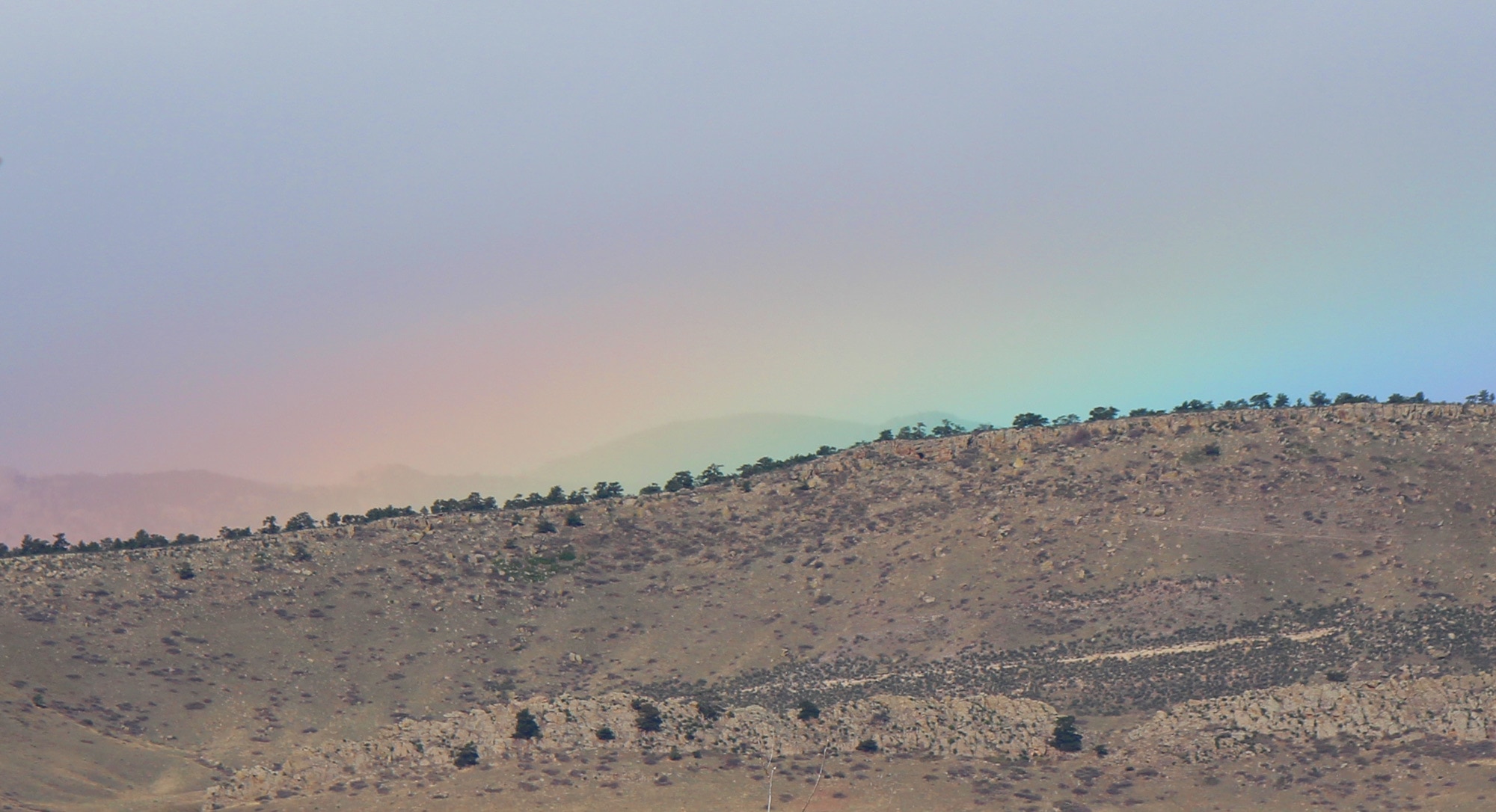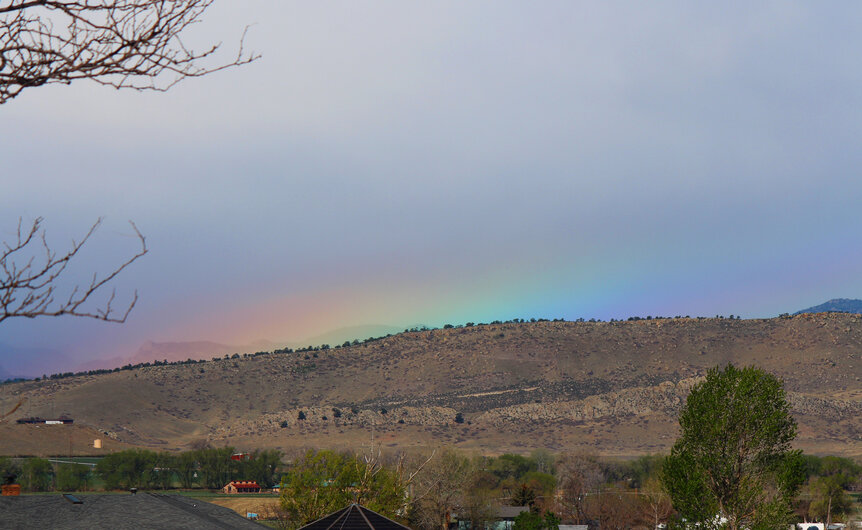Create a free profile to get unlimited access to exclusive videos, sweepstakes, and more!
Top o' the rainbow to ya!

Colorado skies are a neverending delight. The things I've seen since I've moved here… fluctus clouds, fogbows, iridescence, and on and on.
I've seen plenty of rainbows, certainly, and many double rainbows too. Despite being common, I think most people don't really understand how rainbows work. I've described the process many times — here's a good place to start, for example. In a nutshell, raindrops or other water droplets in the air bend sunlight back toward you, and also break it up into colors. Red is on the outside of the primary bow, and blue on the inside.
Geometry is critical here; the Sun has to be behind you, and the raindrops in front of you. The bow is centered in the part of the sky directly opposite the Sun (called the antisolar point), and the raindrops have to be about 42° away from this point to bend the light properly back to you. That's why a rainbow is an arc with a radius of 42°.
I also think most people are surprised that technically a rainbow can actually be a full circle if you are above most of the raindrops bending the sunlight back. I've never seen that except in photos, but it's on my wish list.
Because the rainbow is centered on the antisolar point, the height of the rainbow depends on the time of day. If you see one in the late afternoon, the bow appears in the east and may be high up in the sky, since the Sun is low to the west. If the Sun is higher than 42° off the horizon you won't get one, because then the antisolar point is too far below the horizon to see anything.
One morning I got a wonderful lesson on this geometry. I was out and about in Boulder County, and it was a lovely day. Partly cloudy, with the clouds breaking up, but it was humid and there was a lot of moisture over the Rocky Mountain foothills. The Sun was getting high in the sky, and when I happened to face westward I noticed something odd… a splash of colors just over the horizon*. I suddenly realized what I was seeing, grabbed my camera, and took a bunch of shots. I think this one came out best:
Isn't that pretty? [Click here to see a much larger 3500-pixel-wide version.] It's the very top of a rainbow. The Sun was in the east, up from the horizon about 40° or so, maybe a little less, and the droplets of moisture in the air to my west were creating a rainbow. Or trying to; the center of the bow was well below the horizon, just enough that only the very top of the arch was visible! The rest of it was cut off by the planet I happened to be standing on at the time.
I love how the angle of the top of the ridge makes it more or less follow the path of the rainbow itself, so it blocks the bluer colors to the left, leaving only the redder ones. I was confused for a moment why there's no red on the right, but then realized that this must be because the droplets in the air were in a layer low over the ground in that direction. The red part of the bow was higher off the ground, and the drier air there had no droplets to send that light back to me! It's also possible that a low cloud was hovering there, acting like a lid over the ground so I couldn't see anything at the needed altitude. Hard to say, but it goes to show that even something as common as a rainbow can get pretty complex in reality.
It took only a couple of minutes before the rainbow disappeared behind the western horizon, setting as the Sun rose. It was a serene and truly lovely thing to watch, and put a spring to my step the rest of the day. What a way to start the morning!
And it's a terrific corollary to the reminder I often give: Don't just look up; look around! The sky stretches all the way to the ground — pretty much by definition — and you never know where in it you might spot something wondrous. But if you know and understand what you're looking for, you'll up the odds of seeing it considerably.
* In this part of Colorado, the "horizon" is pretty variable; if you're close to the mountains it might be 45° up the sky! It makes for short days sometimes, and can also make spotting planets low to the west difficult after sunset.



























